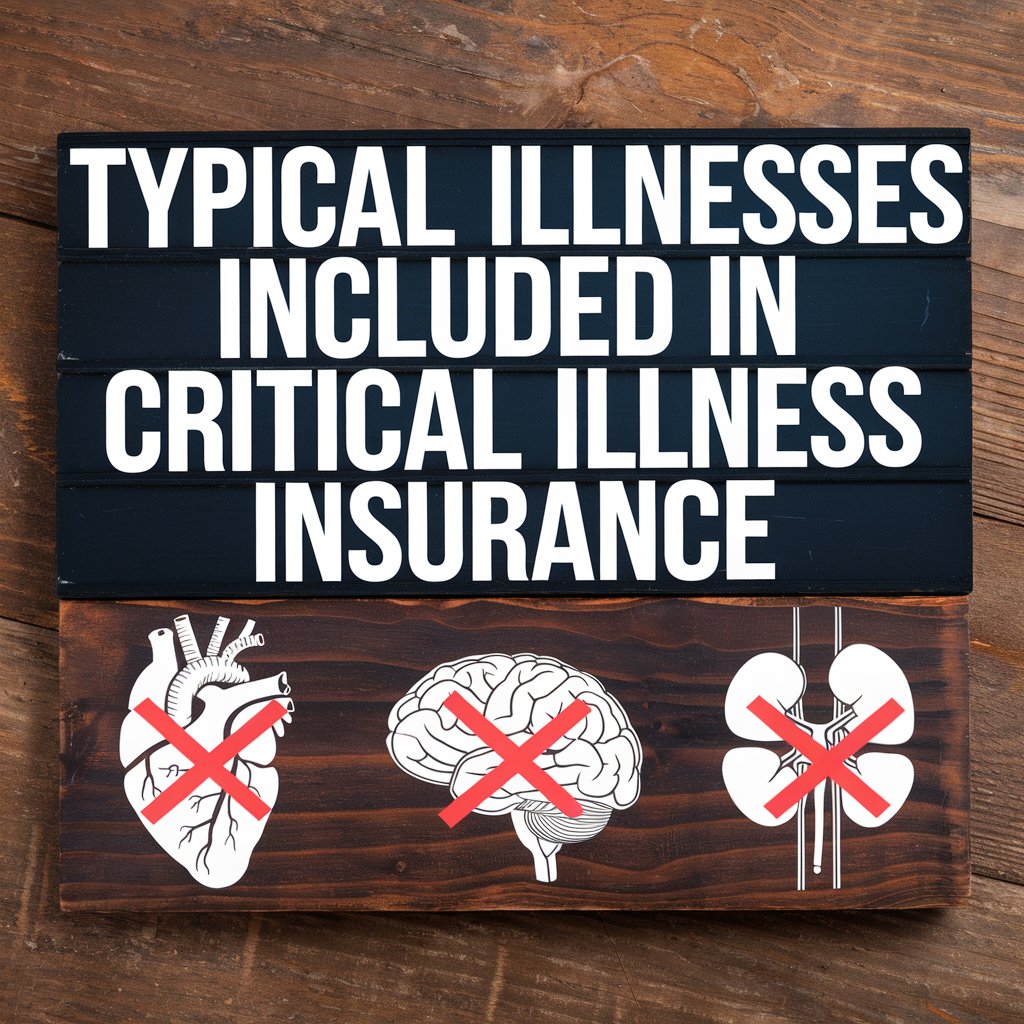Critical illness insurance is a protection plan that gives financial comfort in the case of critical medical conditions. The aim of such coverage is to minimize the financial implications brought about by medical expenses, loss of income, and other expenses resulting from major diseases.
Finding out what common diseases are covered by critical illness insurance can help one who may want to buy this coverage. In this article, we are going to discuss the most common conditions covered by critical illness insurance and their implications, as well as why one needs to have such coverage for financial security.
What is Critical Illness Insurance?
Critical illness insurance is supposed to be paid out as a lump sum if the policyholder is diagnosed with an insured serious illness. The money can be used to finance medical costs, adopt lifestyle changes, or simply bring one peace of mind in trying times. The illnesses covered differ from one policy to another, though some are usually found to include several.
Common Illnesses Covered by Critical Illness Insurance
1. Cancer
Coverage for several types of cancers, such as leukemia, lymphoma, and malignant melanoma.
Cancer is one of the most widely covered medical conditions in a policy; its vast frequency and monetary impact make coverage for cancer treatments highly essential.
Cancer Types Treated: Most insurance policies offer to pay for any of the major cancers, but are not limited to breast cancer, lung cancer, prostate cancer, and colorectal cancer. Many insurance policies specify cancer stages in the terms. Typically, they pay for invasive cancers rather than non-invasive cancers.
Costs of Treatment: Cancer treatment is expensive and encompasses surgery, chemotherapy, radiation therapy, and the drugs that would follow. Such a critical illness insurance payout in the form of a lump sum will go a long way in paying for these expenses.
2. Heart Attack (Myocardial Infarction)
Heart attacks rank as the leading cause of death in the world, and thus, they often are taken under critical illness policies as the cost could be steep in case of aggressive treatment.
Understanding Heart Attacks: A heart attack is a situation where there is a blockage of the blood going to a portion of the heart that damages its muscle.
Treatment and Recovery: The cost may include emergency care, hospitalization, medication, and rehabilitation, and all parts of critical illness insurance during the recovery period.
3. Stroke
Another common condition that is being covered by critical illness insurance is stroke. This is a serious condition and can impact one’s quality of life.
Types of Stoke: There are two types: ischemic, which is caused by the blockade of the blood vessels, and hemorrhagic, which is due to bleeding in the brain. Both require medical care.
Post-Stroke Costs: In the post-stroke stage, the patient may require rehabilitation activities, long-term care, and medication management. Such things can be extremely expensive. Insurance payment can alleviate such expenses.
4. Organ Failure
Organ failure is the failure of any of the body’s critical organs, including the heart, lungs, kidneys, or liver. The reason organ failure is serious is that critical illness insurance compensates for major organ failure.
Organ Failure Implications: It can be overly complicated to treat and results in further evaluation, for surgery, and long-term care in that organ.
Financial Impact: Organ failure can be extremely expensive to treat. Critical illness insurance may help cover the cost of a hospital stay, medications, and potential surgeries.
5. Coronary Artery Bypass Surgery
This treatment is often necessary for patients who suffer from severe coronary artery disease. Being quite common these days, it is frequently included in critical illness policies.
What Is the Procedure? Coronary artery bypass surgery simply creates a new route for blood to reach the heart if its arteries are blocked.
Financial Costs: This kind of procedure involves a lot of money, including hospital stay, surgery cost, and post-procedure care. Insurance companies may help reduce some of these expenses.
6. Multiple Sclerosis (MS)
Multiple sclerosis is an autoimmune disease affecting the central nervous system, and thus, their incorporation into critical illness insurance also reflects the seriousness and long-term impacts of the disease in question.
Symptoms and Issues: MS can lead to so many symptoms ranging from fatigue and mobility to cognitive changes, and thus very variable degrees of disability.
Treatment and Management: MS management may involve lifelong treatment, medication, and a rehabilitation process. All these can be costly.
7. Alzheimer’s Disease
Alzheimer’s disease is a progressive disorder of the brain that affects an individual’s ability to remember and perform cognitive functions. Due to the complexity of the kind of care needed for this patient, it often gets included in critical illness insurance.
Implications at the level of the Individual and Family
The disease can severely affect everyday living; it often requires long-term care, which may be extremely expensive for families.
Financial Implications
Critical illness insurance would provide capital to offset the costs of long-term care, as well as support services.
8. Severe Burns
Usually caused by accidents or disease, patients usually undergo extensive treatments in the form of many surgeries and rehabilitations.
Degrees of Burns Reimbursed: Critical illness insurance usually covers second-degree and third-degree burns requiring significant medical treatment.
Cost of Treatment: The treatment itself can also be lengthy and extremely expensive, and here is an area critical illness insurance helps with.
Why Do We Need Critical Illness Insurance?
These so-called conventional illnesses fall within the purview of critical illness insurance. Therefore, the benefits such protection affords come to the forefront. Here are some of the most important reasons why such insurance is necessary:
1. Financial Security: The amount of enormous medical expenses and loss of income incurred after being diagnosed with a serious illness is immense. Insurance provides a cushion at such a tough time.
2. Peace of Mind: Knowing that all intense health conditions are covered frees the individual’s mind from concentrating on issues like financial pressures.
3. Flexibility in Use of Funds: Funds can be used for a variety of purposes, including medical bills and other expenses like changes in lifestyle or home care.
4. Support for Families: A serious illness could impact not only the sufferer but also his or her family members. A family health Insurance will relieve a member of the family from having to bear additional financial burdens.
Conclusion
Critical illness insurance provides one of the covers which forms a critical safety net for individuals facing severe health issues. Common illnesses that the insurance policy covers enable one to make a choice about their health coverage. This can affect a person’s financial situation and emotional well-being regarding issues like cancer and heart attacks, multiple sclerosis, and Alzheimer’s disease, to name a few chronic diseases. This insurance is useful as medical expenditures are going up constantly, securing yourself with such insurance puts one a step ahead in safeguarding one’s future.





